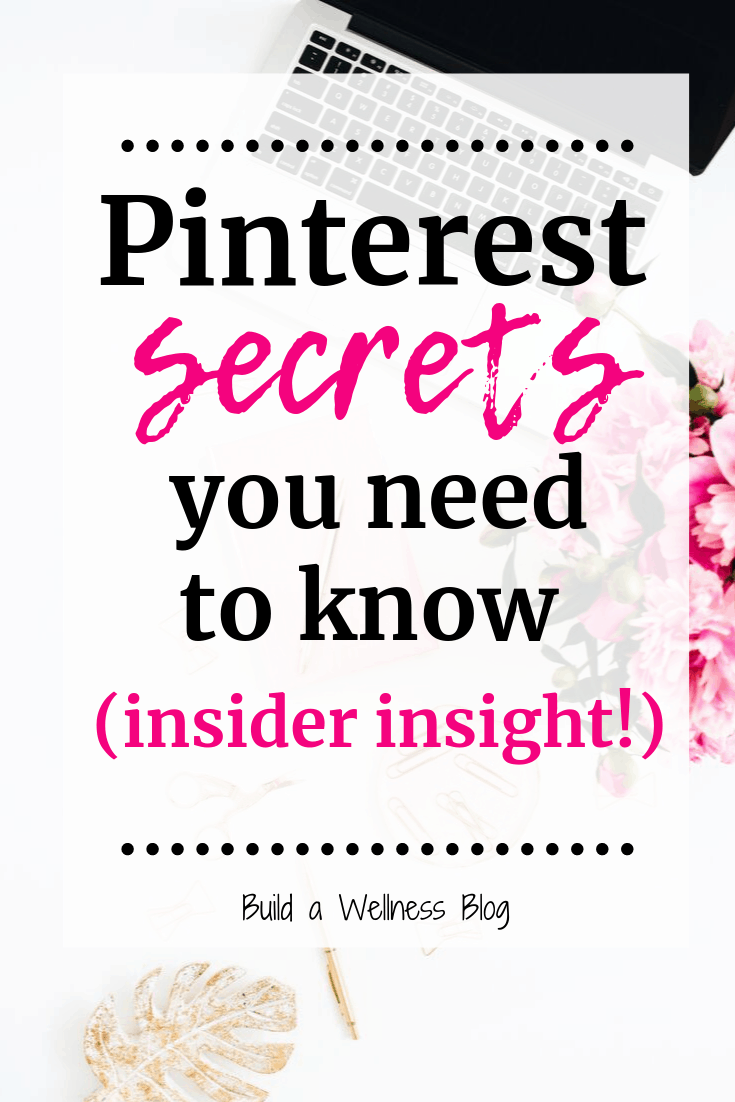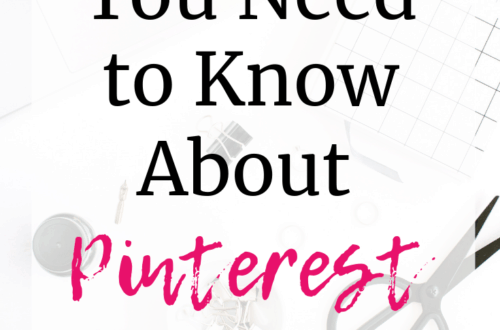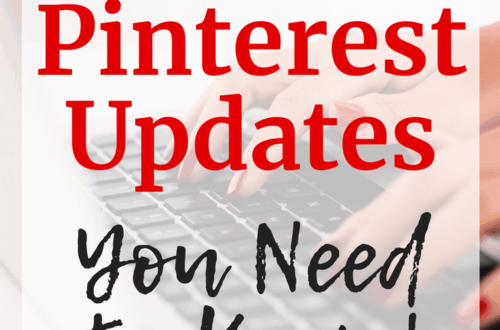
Pinterest For Blogging: Insider Tips Straight from Pinterest!
Thinking about ways to use Pinterest for blogging? Awesome! Pinterest is an excellent free traffic driver and massively important for bloggers sharing anything from food to fitness to fashion content. There are some essential strategies that will help your content stand out on Pinterest and get more visitors to your blog!
Pinterest was by far the best traffic drivers for all of my sites when they were new, until SEO started to build and organic traffic edged it out a bit. That said, it’s still a major traffic driver to every site. And while I’d like to think I’ve got a good grasp on Pinterest – it’s always good to get information straight from the source.
And that’s why I’m sharing this today – I was lucky enough to just sit it on a presentation given by Enid Hwang, the Community and Culture Manager on Pinterest. Not only did she share some really helpful insights in her presentation, but she also answered questions from us which was extremely beneficial.
Here’s all the deets on what you need to know when it comes to Pinterest for blogging! Some of these are Enid’s tips and some are my own, but I can promise you everything will help you get better at utilizing Pinterest for blog marketing.
A. Know the Pinterest user
If you’re just starting to use Pinterest, or maybe you’re a veteran and this might be a good reminder – you want to think about how the “non blogger” uses Pinterest. Pinterest is less “social media” and more of a powerful search engine.
There are more than 300 million active monthly users on Pinterest looking for new ideas and exploring new options. Users want to discover content, and that’s done in three ways:
- Home feed – when they log onto Pinterest
- Searches – when they search for a particular keyword or hashtag
- Related pins – when they’re viewing a pin, the content that’s displayed as related underneath that
Whether it’s looking for fitness fashion, healthy desserts, or ways to create natural cleaning products – there are definitely Pinterest users out there looking for the type of content you likely create.
B. Set your account up for success
You probably are already doing this, but just in case there are any brand-new Pinterest users in here – you want to make sure you have a business account. Business accounts offer several features that are not present in personal accounts:
- Ability to claim your website (as well as things like Instagram or an Etsy store)
- Access to analytics (key for helping to understand what content is doing well and how your profile grows)
- Access to audience insights (which gives insights on the topics your Pinterest audience is interested in)
You can either start a business account, or you can convert your personal account over to one.
C. Focus on the three principles of good Pinterest strategy.
There are three main areas that you need to focus on to be successful on Pinterest. Let’s break each of them down.
1. Quality
Quality is extremely important to making sure that users will want to click on and engage with your content. You want high quality visual pins, and that can include static or video-based pins.
The key is to create content that is a mixture of actionable and inspirational.
You want a balance between those. If you’re a fitness blogger that targets beginners, for example, you don’t necessarily want to be putting out fitness pins that make it seem like you have to be a total gym nut to complete them. At the same time, you want to create some fire and passion within the person that makes them want to try your workout or your plan. Finding the sweet spot within these two priorities is important.
As far as the visual itself, you can create vertical pins using something like Canva. In there, you can add text overlays so that the user knows what the pin is about.
2. Frequency
“You can go ham on Pinterest” was one of my favorite phrases of the session. Enid reminded us that it’s fine to pin frequently (as long as it’s not spammy – i.e. pinning the same thing to every board you have in an extremely short time span).
There was no specific number of pins mentioned for frequency, but she did mention it’s fine to “go upwards of 10+ pins per day”. In my course, I recommend 5 to 30+ pins per day, depending on how long you’ve been blogging and how much original content you have.
That sounds a bit overwhelming, but keep in mind one piece of content can count as several pins if you have multiple relevant boards that it applies to. For example, today you might pin your overnight oats to your healthy breakfast recipes board, tomorrow to your oat recipes board, and the day after to your meal prep recipes board.
Here’s another interesting piece of advice that she mentioned as far as frequency – try to pin at least one NEW piece of content on Pinterest each week. This consistent approach is better than an occasional flurry of putting out several new pieces.
(And I’d venture to say that the more new content you can introduce to Pinterest regularly – new pins with new descriptions for old posts; new pieces of content you just wrote – the better).
3. SEO
Like I mentioned early, at it’s core, Pinterest is a search engine. Users primarily search for content (versus the other methods of finding pins) so you need to make sure your pins are optimized for that search. This can be done by optimizing your pins with a:
- Simple pin title (up to 100 characters)
- Detailed description with relevant hashtags – You can use all 500 characters if you’d like, but ideally you want to convey the message of the pin in the first 1-2 sentences.
These are how Pinterest knows to put your content in searches for different keywords. Now, there’s a lot that goes into the actual ranking of the pins when a user does search – but you’ll be hard pressed to get your pins into those searches if you don’t complete the description step.
Here’s a fun “secret” tidbit that was shared – repetition may help Pinterest understand what the content is about as far as SEO and ranking. For example, let’s say you are sharing a arm workout. Including “arm workout” in your title, description, and as a hashtag can help both Pinterest and the user draw the clearest straight line to connecting what your content is about.
(Also, clarification on this – don’t just write “arm workout arm workout arm workout” over and over in your description. Pinterest is smart enough to know that’s spammy).
Also, here are some key Pinterest questions – asked and answered!
These might clear up some misconceptions about Pinterest for bloggers.
1. What orientation should Pinterest images and videos be in?
As far as image and video specifics, Enid said both vertical and square content is best.
While I think square video can do fine, I do still personally believe vertical is the best layout for static images. Ideally you want to do vertical content in a 2:3 ratio.
2. How long should videos be on Pinterest?
According to the presentation, the best performing videos right now are between 50 seconds and 2 minutes.
3. Are there any other video tips?
- Don’t depend on audio – remember most users are watching on their phone and won’t turn the volume on.
- Add captions or text overlays if you need to in order to make the message clear (though not all videos will require this).
- You don’t have to “give up all the goods” – for example, it’s fine to show recipe videos that don’t have the amounts and link back to your content that does have that information.
- Pick a good cover image for your video.
- Make your videos attention grabbing and easy to understand.
4. Are followers or monthly viewers more important?
Both are important in their own ways.
As far as followers, you don’t have to have a ton to be successful. But according to Enid, followers are the first people that your content is pushed out to. The more your followers interact with that content – if they click it, save it, etc – the more that Pinterest will push it out to non-followers in the home feed, searches, and related pins.
Monthly viewers are everyone that has seen your pins (from your own site or other people’s stuff that you’ve pinned) at some point in the last month. That could be scrolling through their home feed, scrolling through search, or scrolling through related pins. This might be a helpful number you can share with brands who might care about overall impressions.
Above all, in my opinion clicks are going to be the major metric to track on Pinterest. After all, you want traffic!
5. Do scheduling platforms change your reach?
According to this presentation, no. Enid said that whether you manually pin or use something like Tailwind (referral link), they are completely equal in the way Pinterest sees the content and distributes it.
As a quick aside – I’ve seen a lot of people asking questions about Tailwind lately in Facebook groups. Some people are saying it’s not worth it to pay because it’s not increasing their reach.
Here’s my thoughts – Tailwind is meant to be a time saver. If you’re using the exact same strategy manually versus on Tailwind, of course you’ll see the same approximate reach. However, it can take you an hour of scheduling on Tailwind to pump out that content for the week, versus having to pop onto Pinterest a few times a day to do that.
Either manual or Tailwind works just fine; they key is consistency.
6. How early should you pin seasonal content?
At least one month in advance.
7. Should you delete boards?
No, there’s no penalty for too many boards. Make sure when you create a board, though, that you have a decent pool of original content to share to that board.
8. Are hashtags used for the algorithm, or only for chronological search?
They are used for BOTH. This was really helpful to get confirmation on. So in addition to people being able to search the using hashtags, the hashtags also help Pinterest understand what your content is about.
Want more info about Pinterest hashtags? Check out this post.
9. If you write content that does well on Pinterest on a certain topic, is it likely that similar content on that topic will do well?
Yes. Pinterest has something like a “reputation” for your domain, so if you’ve proven in the past to provide valuable content on certain topics, it’s more likely that new content on that will do well too.
10. Any advice for promoted pins?
Enid works more on the organic side so I didn’t get as much insight here as I had secretly hoped for, haha. But the one piece of advice she did give is that promoting content which already has traction makes it more likely that the ad will do well within a particular budget.
I hope this was a helpful overview of some of the key Pinterest tips for blogging. If you have any questions, feel free to share them below. And if you need additional help on Pinterest or want to dive deeper, be sure to check out my PinSmart Pinterest course.
Share: Did anything in here surprise you? What do you struggle with when it comes to Pinterest?









2 Comments
Emy
I’ve been a Pinterest and tailwind user for a few months but don’t get much traffic or engagement from the site.
I’m hoping the additional tips I got here today will help correct that.
Chrissy Carroll
Hopefully this helps get some extra momentum going on Pinterest!! Good luck Emy! 🙂